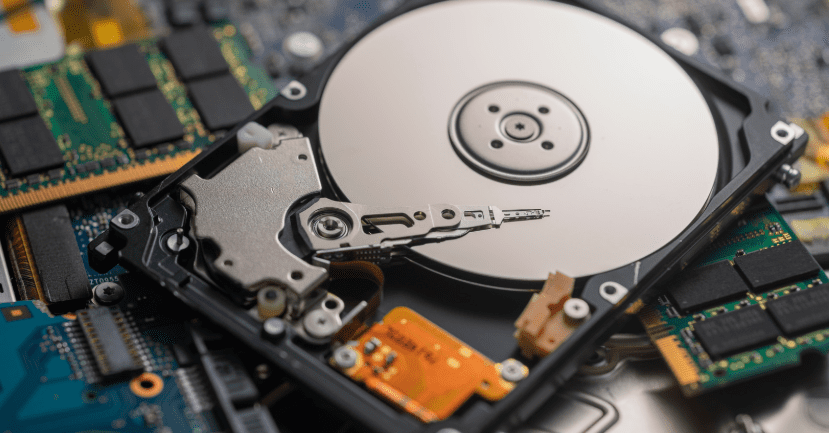Formatting a hard disk is something that usually is considered important to the user. Putting this into practice, the hard disk is formatted to delete files, change an operating system, clear corruption problems, etc. One of the questions most frequently asked in connection with this topic is, how long will it take to format a
Formatting a hard disk is something that usually is considered important to the user. Putting this into practice, the hard disk is formatted to delete files, change an operating system, clear corruption problems, etc. One of the questions most frequently asked in connection with this topic is, how long will it take to format a hard drive? This largely depends on factors like the capacity of the hard disk, the type of format being either quick or full, and the condition of the hard disk.
In this article, let us discuss the different types of formatting processes, factors that affect the format time, and how to enhance the effectiveness of the formatting process. Secure wipe alternatives for data will also be reviewed, including such options as data scrambling across the specific hard disk.
Quick Format vs Full Format
There are certain things concerning the terminology i.e. the difference between quick vs extreme format that go before answering the inquiry: how long does it take to format a hard drive?
Quick Format: It is quick, as its name implies. It does not actually scan or fill every section of the disk with new stuff. It merely takes away the file structure on the disk and makes it look empty. Usually, a quick format of the hard disk only lasts a couple of minutes irrespective of its capacity.
Full Format: This is the more exhaustive procedure; full formatting scans the whole hard drive for bad sectors and allocates a new file system to the full surface of the disk. As for how many hours it would last, it will depend significantly on how massive the surface of the disk is.
If it is really that, it is just rearranging the files into folders to make way for the new data to be entered. In this case, quick format is okay for some purposes of recovery. However, for data wipe/high-density cranial surface and correcting system errors, a full format is mandatory.
Factors That Affect How Long Formatting Takes
The time that takes to format a hard drive is affected by certain parameters. Some of those key factors are described as follows:
1. Size of the Hard Drive
The greater the size of the drive, the more time it usually takes to format it. A one-terabyte HDD can take anywhere from a few minutes to a couple of hours, depending on whether it is a quick format or full format. Therefore, the size of the drives themselves is one of the reasons why people ask – “Why is it taking so long to format my hard drive?”
2. Type of Drive-HDD vs. SSD:
The difference in the type of hard disk can even be the factor affecting the speed at which the media is formatted between the two formats, namely HDD vs. SSD. In the past, HDD had always been slower than SSD. Hence the formatting tasks of SSD hardly take any time when compared to formatting tasks of an HDD. Thus a full format of 1TB SSD would take maximum 2-3 minutes while a full format of 1TB HDD would take approximately 1 hour or so.
3. Drive Condition
If the drive isn’t clean and there are any errors or bad sectors, full formatting will thus increase delays. During the full format, the damaged regions will be checked and fixed if possible, which takes longer. A functioning hard disk drive is expected to format in no time when compared with a hard disk drive that has undergone physical damage.
4. Type of File-system
The other thing that determines the period for formatting dressed to the file system type is to be able to select that most suited for hard disk surface. The file systems like NTFS, FAT32, and exFAT differ in structure and in some instances, like during full format, NTFS would take longer preparation. Most assuming today all modern drives are below formatted NTFS. But older systems or devices are more pertaining to FAT32 or exFAT, which could vary slightly in time.
5. Operating System
Each operating system has its own method of formatting a drive. In Windows, for example, formatting can be done as a quick or full format for any storage device. This is unlike the Linux OS, where users have to download storage formatting applications like GParted,. They take different amounts of time processing the formatting. Depending on the Operating system, Formatting a hard drive may take a slight different time especially when it comes to a proper full formatting.
Average Time Estimates
Now that we have analyzed these conditional variables, let’s get straight to the point of estimating average time for formatting drives of different sizes in brief:
Quick Format:
500GB: 5-10 minutes
1TB: 10-20 minutes
2TB: 20-40 minutes
Full Format:
500GB: 1-2 hours
1TB: 2-4 hours
2TB: 4-8 hours
Of course, these are rough estimates. The condition of the drive, system specifications, and other factors might either shorten or extend the time.
How to Speed Up Formatting?
In case you want to speed up the formatting process, here are a few things you can do:
Select Quick Format: If you’re just going to format the drive but not actually perform a full format, just selecting quick format will save an awful lot of time.
Upgrade Your Hardware: Speed would dramatically increase by using an SSD instead of a hard disk drive especially for full format.
Pre-Check for Errors: If a check disk operation is run on a drive before you perform a format, any bad sectors or errors will be fixed, thus saving full format time.
Use Efficient Methods: The third-party application capable of comprehensive yet fast data deletion works much faster than the OS built-in functionality in some cases.
Third-Party Tools for Secure Data Wiping
Use such high-end products for such procedure, when wanting to completely wipe without any traces left data in the disk before the formatting process. One such program is the SysTools Disk Wipe Software which engenders the user of the hopelessness of retrieving any erased information. Unlike an erase action, a plain erase may leave one or two recoverable formats of information. But this Data Wipe works by deep shredding meaning the information is overwritten over and over again such that it remains lost forever. However advanced techniques may try to recover it.

Final Thoughts
How long does formatting a hard disk last? Well, it is somewhat a tall order to say as its duration can actually vary with the type of formatting-quick or full – size-type of the disk-and its state. A quick format can take just a couple of minutes while a full format may take hours. If you really want your previously saved files to be deleted forever, the most professional tools would be the best option to go ahead with.


















Leave a Comment
Your email address will not be published. Required fields are marked with *